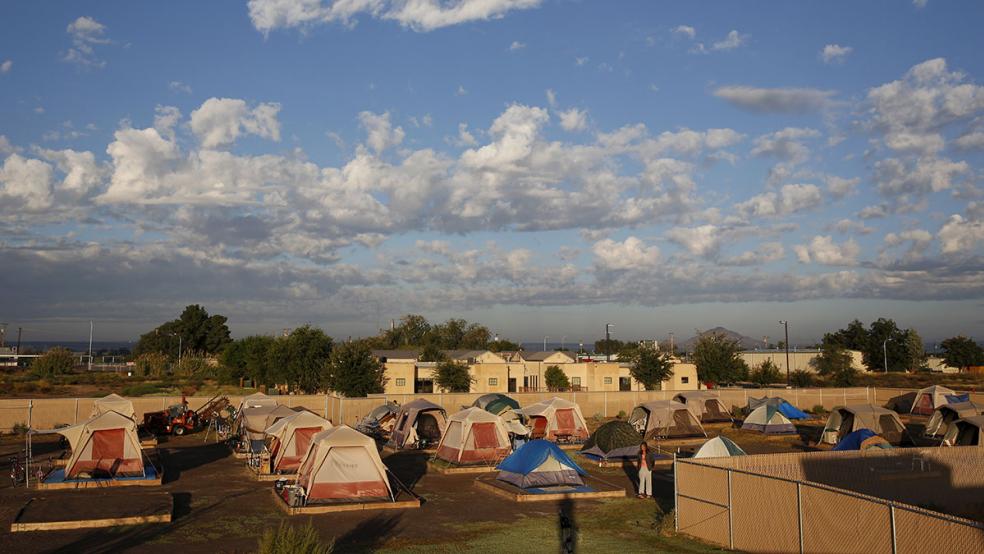For the time being, at least, Congress this week spared the Department of Housing and Urban Development (HUD) from the deep cuts in its operating budget favored by the Trump Administration.
The massive spending bill unveiled Sunday night by Republican and Democratic congressional negotiators will keep federal assistance flowing –albeit at diminished levels -- that experts say provides affordable, decent housing to the nation’s poorest families and individuals.
Related: How Trump's One-Man Budget Show Turned Into a Bi-Partisan Joint Venture
The $1.1 trillion spending deal designed to keep the government operating for the next five months will provide $38.8 billion in discretionary funds for HUD, a $513 million increase over last year’s level but $824 million below former President Barack Obama’s request and less than what housing advocates say is needed to keep up with demand.
The agreement – which is subject to final votes this week by the House and Senate -- includes $27.5 billion for Section 8 housing vouchers and public housing subsidies, $11.5 billion in other housing and rental assistance for the poor, elderly and disabled, and $3 billion for Community Development Block Grants.
The fate of the federal housing program still hangs in the balance: Trump’s proposed budget for fiscal 2018 would slash HUD programs by $6.2 billion over the coming year, a 13.2 percent reduction from this year’s levels. At a time when the nation is experiencing a dire shortage of adequate housing for the poorest families, housing experts say that deep cuts of that magnitude would have a devastating effect.
Underscoring the problem, a new report by the Urban Institute found that the affordable housing crisis has hit virtually every county in the country, from upscale urban areas like San Francisco and New York to small towns and rural areas.
Related: Congress Averts Shutdown, Passes a Five Month $1.1 Trillion Spending Package
Nationwide, only 21 inexpensive and livable housing units are available for every 100 extremely low-income renter households, whose earnings are below 30 percent of the area median income. That ratio rises to 46 units for every 100 low-income houses when federal housing support is factored in.

If the Trump administration succeeds in cutting or gutting federal housing assistance programs, the impact could be catastrophic, the new study suggests.
Federal housing programs help almost 2.9 million extremely low-income renters acquire adequate housing. HUD’s Housing Choice Voucher Program alone assists nearly one million renters, followed by Multifamily Section 8 and public housing, according to the report.
“Since 2000, rents have risen, and the number of renters who need low-priced housing has increased,” the report states. “These pressures make finding affordable housing tough for poor households. . . Without the support of federal rental assistance, not one county in the United States has enough affordable housing for all its [extremely low-income] renters.”
Related: Another Learn-on-the-Job Cabinet Nominee: Ben Carson to Run HUD
The report is based on data from the 2000 Census and the five-year American Community Surveys.
Among the study’s other findings:
- The shortage of adequate, affordable and available units for the poor is worst in large, urban areas and counties, although no section of the country has an adequate supply. There are only 42 available and adequate units per 100 extremely low-income households in metropolitan counties, compared with 69 available and adequate units per 100 in rural counties.
- Federal rental assistance programs are a critical source of affordable housing outside of metropolitan counties. In nonmetropolitan counties, about 150,000 low-income renters live in units subsidized by the Department of Agriculture, while another 296,000 are supported through HUD housing assistance.
- Absent federal assistance, rural counties would lose 40 percent of the housing stock that’s affordable to residents who live in deep poverty. Urban counties, meanwhile, would be down by 57 percent.
- More than half the units for extremely low-income renters in 2014 were made affordable through a federal subsidy. However, the percentage of affordable units supported by federal subsidies declined from 60 percent in 2009 to 53 percent in 2014. That is comparable to the share of federally assisted affordable units in 2000.





